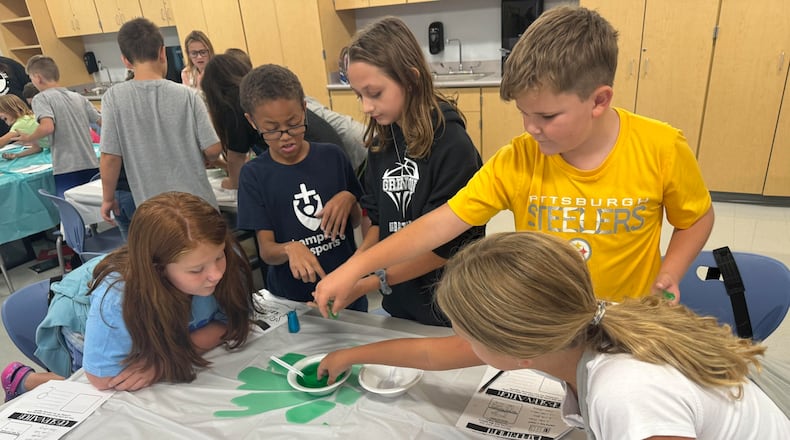“By identifying students early, we can provide targeted support for the students to earn the required credits, including credit recovery options for those that need them,” he said. “We also work alongside students to identify the best pathways for demonstrating competency and earning readiness seals.”
The district’s four-year graduation rate stayed just over 96%, while its five-year grad rate rose from 94.9% the year before to 96.6%. Greenon’s four-year graduation rate was the second-highest in Clark County, just behind Northwestern. Most schools’ “College Career Workforce and Military Readiness Percent” on the state report card rose in 2023-24, and Greenon was no different.
“This personalized and flexible approach has led to positive results, with 85 students demonstrating post-secondary readiness this year — more than double the 41 students from last year,” Knapke said. “This highlights the effectiveness of our strategies in ensuring students are prepared for their next steps after graduation,” Knapke said.
On the early literacy measure, the district again earned 3 stars, with its raw score dropping a fraction of a percentage point. Knapke said this fall’s K-3 reading diagnostic results showed improvement this year with a higher number of students identified as on-track. He said that can be attributed to staff training that has helped give teachers good strategies.
Greenon’s gap closing and progress scores decreased to 3 stars this year compared to 4 stars last year. The district stayed the same in achievement with 3 stars. As with the early literacy measure, Greenon’s performance index on state tests dropped a fraction of a point (from 76.8% to 76.2% this year).
Although some scores decreased, Knapke said they are “pleased” they met the state standards in those categories.
“Our focus this year is on improving educational gaps for our students by continuing to analyze our data and implement proven strategies,” he said.
The two most prominent areas of the state report card are achievement and progress. Greenon ranked just below the state median in performance index (the most common marker under achievement), and just above the state median in growth index (a key in the year-over-year progress area).
The Ohio Department of Education and Workforce’s “high-level” data report for each school district’s report card includes 16 different metrics related to test score performance, year-over-year progress, early literacy and other factors. Greenon’s report card this year showed improvement on four of those markers, no change on two measures, and declines on 10 of them.
“Our team has focused on pinpointing strategies that have proven effective, and areas that require further improvement. By consistently evaluating the data, we have been able to implement interventions and make adjustments to overall district performance,” Knapke said. “While we celebrate these achievements, we also recognize that there is always room for growth and continuous improvement.”
About the Author


